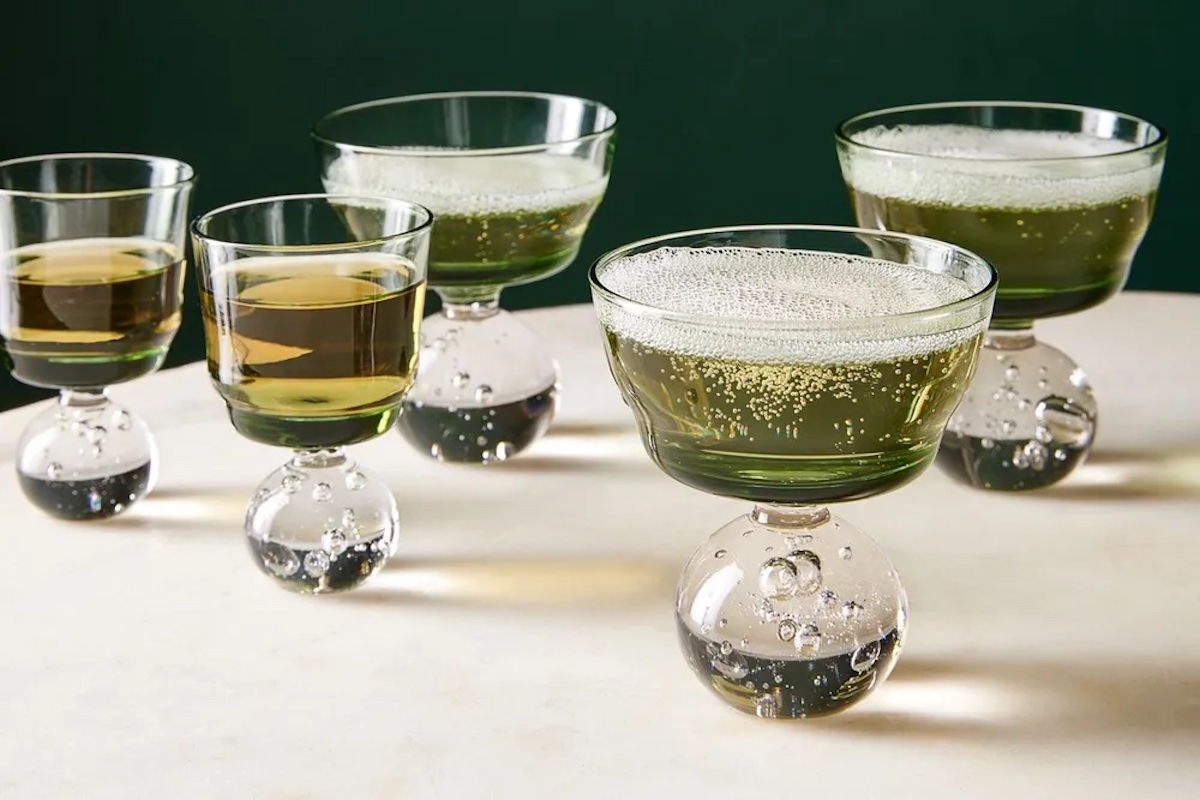My first encounter with absinthe was in downtown Los Angeles, at a macabre cirque-esque show in a rundown theater, full of faded glamour. The event’s pop-up bar boasted a handful of cocktails, including “Death in the Afternoon,” whose ingredients were listed as “Champagne, Absinthe, and Ennui,” the latter of which greatly cheered up the goth in me.
I wasn’t ready for how much I loved absinthe. The anise-y, licorice-forward notes were refreshing and livening. They felt at once new and exciting, the opposite of the ornate—yet decaying—theater I was surrounded by, but also full of avant garde artist energy, pushing boundaries. Sordid and salutary all at once. I sensed history in it all.
It’s fitting that my introduction to the spirit was amongst disheveled artists. The spirit garnered both glory and its bad-news reputation in 19th-century France, where everyone from Van Gogh to Oscar Wilde was a fan (or at least absinthe-curious), producing works of art both glorifying it and demonizing it whether or not that was the artist’s intent. No spirit has had quite the reputation, though perhaps whiskey and country songs would give it a run for its francs.
But what is absinthe? It’s named for the chief ingredient that makes it unique: artemisia absinthium, which you might know as wormwood. Traditionally, wormwood—along with a host of other botanicals such star anise and fennel—is macerated in high-proof, distilled alcohol (although once upon a time wine might have been used). Once flavored, the alcohol is diluted and redistilled. These days there are some producers who take the shortcut of simply adding extracts to flavor an already distilled alcohol, although these are considered to be of lesser quality.
People seemed to look past the uptick in reported cases of alcoholism and the rise in drugs like opium and morphine, focusing instead on the alleged misuse of absinthe. True, the intake of absinthe in France had grown from 700,000 liters a year in 1874, to 36 million liters in 1910. But, these were misleading statistics, as absinthe only made up 3% of alcohol consumed in the country, with wine taking the lead at 72%.
Still, absinthe was the villain in this melodrama, the thing to blame for all societal ills. The wine industry, go figure, was one of its biggest enemies; happy to get a contender out of the alcohol race. France banned sales of absinthe in 1914, and soon it was prohibited pretty much everywhere but the UK and Spain.
The anti-absinthe party blamed wormwood, the crucial ingredient in absinthe making. Wormwood contains a compound known as thujones, which is a terpene. In large doses terpenes could cause convulsions, but one would die of the alcohol in absinthe far before they would be affected by the level of thujones.
In the absence of absinthe, quite a few anise-based spirits that didn’t contain wormwood grew in popularity, but never quite hit the mass appeal of absinthe. (At least there weren’t artists carrying it in a hollow cane around the Moulin Rouge as Henri de Toulouse-Lautrec once did.)
Nearly a century later, science prevailed as studies revealed that the amount of thujones in absinthe were not behind the madness. In 2007, challenges to the absinthe ban were raised and countries began to repeal the ban. Lucid became the first absinthe approved to be imported to the United States in 2012.
As the bans lifted, drinks like the Sazerac and Pastoral Wander reentered the modern bartender’s wheelhouse of classic cocktails. As for me, I love to riff on absinthe as a nod to its wacky and storied history. Thusly, I created The Last Sword, a quick and easy drink perfect for a gin lover.


